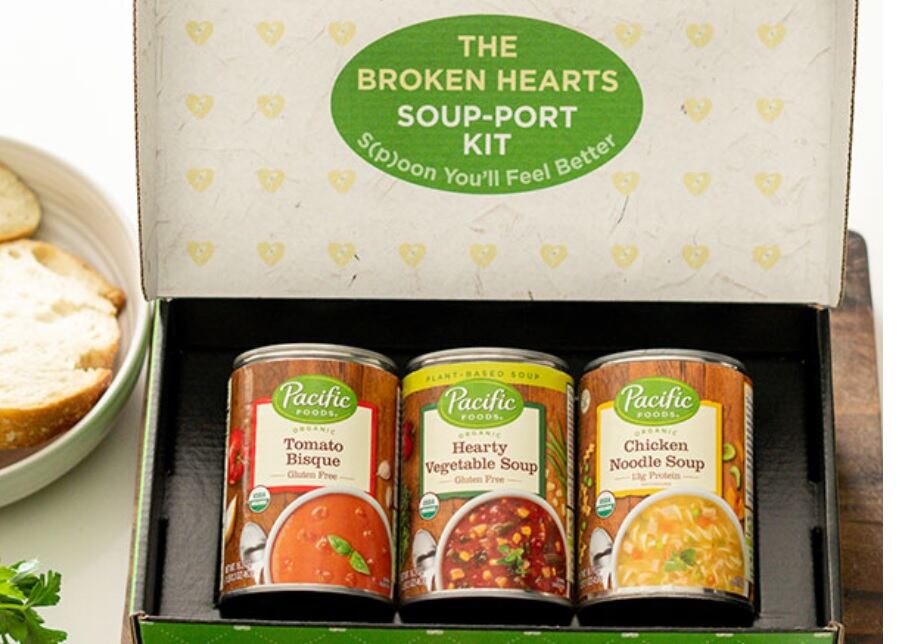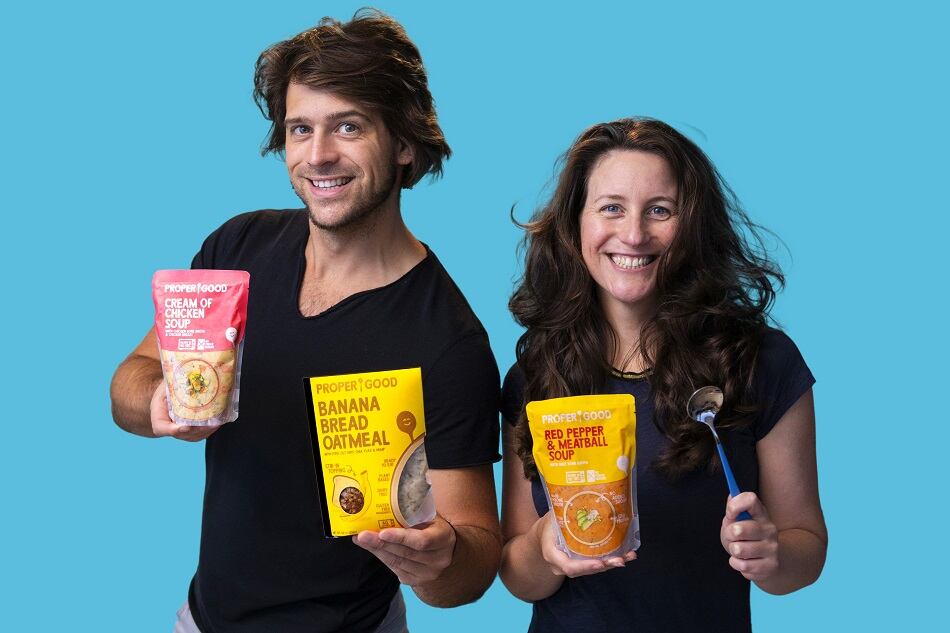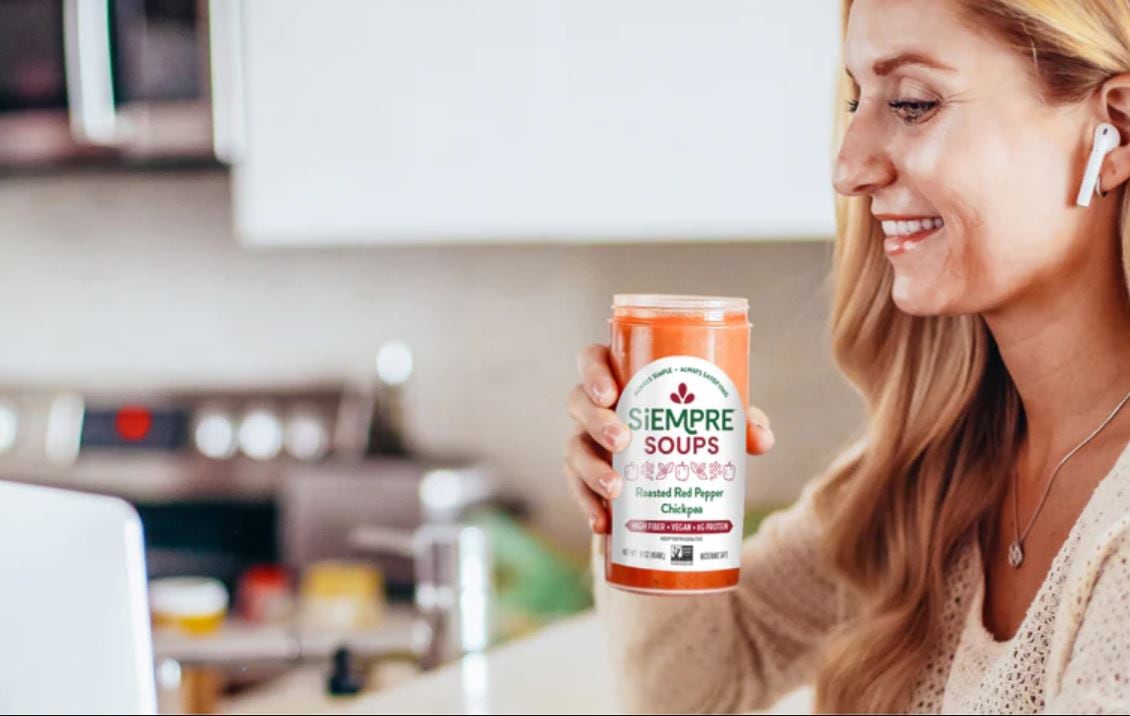Many Americans are also turning to ready-to-eat soup for comfort and an affordable meal during what can be an emotionally and financially challenging season, especially as the economy continues to tighten, suggests data from SPINS, research from Pacific Foods and consumer feedback gathered by Zoup!
Consumer data and insights also reveal that the inspiration for buying ready-to-eat soup influences the type and flavor to which they gravitate – meaning the more reasons there are for sipping soup, the more room there is for innovation.
Inflation buoys soup sales, creates marketing opportunities
According to a recent study by SPINS, sales of shelf stable soup spiked 10.6% to $8.23bn in 2022 over 2021, and while this was driven primarily by higher prices, Scott Dicker, senior market insights analyst at SPINS, says inflation is also creating opportunities for growth in an otherwise sleepy category.
He explains that during periods of economic uncertainty, shoppers looking to save money gravitate to what he calls a “college diet,” which includes inexpensive meals “like the ramen blocks and the little cups of noodles,” which he says “are performing particularly well.”
He explained that both ramen blocks and instant noodles, cups and soup cups are showing positive unit growth upwards of 20% to 30% depending on the time period over the last year.
“We see people are looking for deals and promotions as prices have gone up, and these still average about a buck for these things – which is still up significantly, but they are perceived as a value,” he said.
Soup has a strong value proposition
Because not everyone is willing to eat the same quality of food they ate during college or other financially challenging periods, and because consumer spending still remains relatively strong, Dicker says more premium or better-for-you versions of instant noodles or cups of soup have an opportunity to gain market share as well.
“If there was a more premium version of these products – maybe using organic ingredients – that was maybe a little more expensive, like $2.50 instead of $1 that you could still get a meal out of, I think that’s something that could look good to a lot of people,” he said.
On the same note, he added, marketers likely will see more traction if they position soup as a less expensive but still filling and nutritious meal rather than as a side dish or snack.
Likewise, he said there may be opportunities for brands currently sold primarily in the grocery store to expand their reach into new channels where financially squeezed consumers are migrating. These include mass retailers such as Walmart, which has touted its recent appeal to higher income shoppers, and also dollar and convenience stores. To make the move they may need to create less-expensive lines or smaller packages with a lower opening price point.
Clean label, better-for-you reinvigorates soup sales
As Dicker hinted at, clean label and better-for-you options made with premium ingredients also are helping to fuel soup sales.
This trend is the foundation and inspiration for a new line of gourmet, shelf stable soups recently launched by Zoup!, which are an extension of Zoup! Eatery’s retail broth line up.
“We have seen for a long time a profound decline in soup sales, and we are seeing now that people are coming back to soup, which we believe people have always liked and wanted, but they were not satisfied by inexpensive concentrated cans of soup,” said Eric Ersher, founder and CEO of Zoup! Good, Really Good Soup.
The soup industry veteran explained that “consumer preferences have been changing and what we offer seems to be in alignment with these changing consumer preferences. We think they want clean label and they want big, unique flavors, and they want the classics done really, really well. And we are driven to offer that and to earn their business and their trust,” he said.
These values shine in the company’s recently launched line of soups that are kettle-cooked in small batches and free of gluten, artificial ingredients and preservatives and feature one of Zoup!’s broths as the base. The line includes classics like Tomato Bisque and Garden Vegetable, but then also modern updates on favorites with on-trend ingredients. For example, Butternut Squash with Brown Butter and Sage, Spicy Chicken ‘Chilada and Chicken & Riced Cauliflower.
Wanted: Bold flavors, plant-based options
Pacific Foods is also tracking – and tapping into – growing consumer demand for clean, familiar ingredients and bold flavors that offer modern twists on classics.
“Prioritizing high quality ingredients is a trend that we will continue to see in the food space because we know that 75% of consumers look for foods with only recognizable ingredients. At Pacific Foods, we continue to prioritize simple, wholesome ingredients across the entire portfolio,” Tim Goldsmid, Vice President of Marketing for Pacific Foods, told FoodNavigator-USA.
For example, he noted, “through our recent launch of a reinvigorated lie of ready-to-eat soups, soup lovers will find 11 refreshed recipes, each with their own array of premium, trending ingredients such as tahini and kale, packing each bite with flavor.”
He also pointed out that “as pioneers in organic, we believe at Pacific that food is part of a bigger, more important ecosystem and so we always aim to create foods that consumers can feel good about on multiple dimensions. That is also why we ensure that our chicken SKUs we only use free range chickens.”
Plant-based soups
Pacific Foods also sees growing demand for more plant-based soups.
“The plant-based food market is expected to grow 12% from 2020-2027, so at Pacific Foods, it is important to us that we continue to give soup fanatics a new way to incorporate nourishing ingredients into their diet through innovations, such as our new line of ready-to-eat soups and first-to-shelf Oat Milk Soups,” Goldsmid said.
This fall the brand also released a line of plant-based chilis, which Goldsmid said, “has allowed even vegetarians and vegans to get in on the chili action.”
The line includes Plant-Based Fire-Roasted Vegetable Chili, Plant-Based Harvest Black Bean Chili and Plant-Based White Bean Verde Chii, all of which Goldsmid said meet consumer demand for “a quick and filling meal” and a way to “spice up your weeknight dinners [with] unique ingredients such as tomatillos, roasted poblano peppers and black quinoa.”
The brand’s expansion into chili is well timed as this is one of the brightest spots in the soup category with SPINS data showing sales of chili up 11% year-over-year to $612.3m in total revenue.
‘There are really very few foods associated more with ‘I’m sick’’ than soup
Another fast-growing soup segment according to SPINS is broth – and in particular bone broth, which likely appeals to consumer interest in foods that can boost their immunity or provide support when sick.
“There are really very few foods associated more with ‘I’m sick’ than a bowl of chicken noodle soup,” which is a “comfort food for a lot of people,” said Dicker.
He added that while chicken soup is the classic go-to when someone is sick, he is seeing an uptick in broth sales, which SPINS data shows dominating the market with a 4.9% increase in sales this year to $1.47b in total revenue.
Like other categories of soup, most of this comes from inflation with overall units down. However, bone broth – which is often touted for healthful benefits – is up 15% in sales and 5% in units year-over-year.
For now, soup’s cache as a health food leans primarily on the idea that it is easy to digest, its heat can soothe a sore throat and it can replenish nutrients when it is hard to keep food down, said Dicker. But he added he wouldn’t be surprised if in the coming years “extra wellness ingredients,” such as medicinal mushrooms or those with connections to ayruvedic traditions.
Soup for the soul
As Dicker noted, many people turn to soup when they are not feeling well because they associate it with comfort, warmth and care – attributes that Pacific Foods says also makes it a go-to food for people who are feeling down and need emotional support.
A prime example of this is after a breakup, which a survey by Pacific Foods found are more prevalent in December with nearly two-thirds of Gen Z and Millennials having gone through a breakup or known a couple who broke up during this month. The top reasons: not seeing a future together (52%) and wanting to avoid setting unrealistic expectations during the holiday season (43%).
“At Pacific Foods, we’re all about providing nourishment. We consider ourselves experts in comfort food and what better way to provide our customers dealing with heartache than with the nurturing feeling of a warm bowl of soup? And consumers agree. In fact, our survey also uncovered that 88% of those experiencing a breakup reach for a bowl of soup as a source of comfort,” Goldsmid said.
That is why Pacific Foods created a limited edition Broke Hearts Soup-port Kit, which is a custom bundle of its most comforting soups “to help heal the broken hearted this holiday season.”
Tapping into rising consumer interest in mental wellbeing is an opportunity that will stretch long beyond the holidays for the soup category, especially as brands bring together better-for-you ingredients and decadent or comforting flavors to create permissible indulgences that sooth the body and mind, added Goldsmid.




